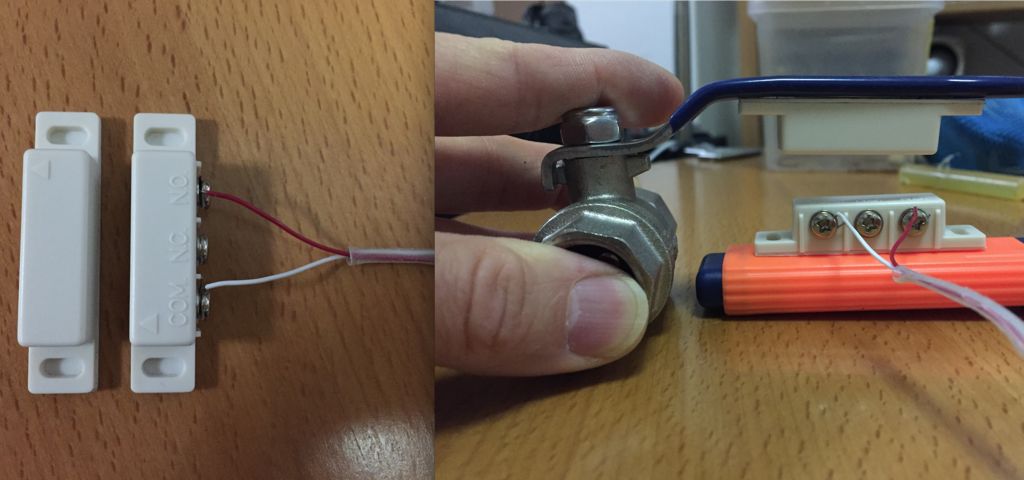

- #Raspberry pi smart home control how to
- #Raspberry pi smart home control install
- #Raspberry pi smart home control manual
- #Raspberry pi smart home control full
- #Raspberry pi smart home control portable
Start the application (Recommended for this setup): npm run startFor Server Only use: npm run server . Make a copy of the config sample file: cp config/config.js.sample config/config.js
#Raspberry pi smart home control install
Terminal – Adding MagicMirror Modulesĭownload and install the latest Node.js version: curl -sL | sudo -E bash -Ĭlone the repository and check out the master branch: Fortunately, this is just as straightforward.
#Raspberry pi smart home control manual
Note: The official support way of installation has been updated from single line command to manual installation. For simplicity the main snippet has been quoted below:
#Raspberry pi smart home control full
Head off to Magic Mirror for the full Installation & Usage Guide. Upon boot-up of the Raspberry Pi, complete the remaining setup, and ensure you’re connected to the internet via LAN/Wi-Fi. It’s has a great community and support which makes this a solid project. MagicMirror is an open-source modular smart mirror platform developed by MichMich. Installing Magic Mirror MagicMirror Installation on Raspberry Pi 4 Whereby you could access Pi via VNC or Mouse and Keyboard Note: This process could take 10-15 minutes
#Raspberry pi smart home control how to
You could find more information on how to install the latest Raspbian OS on the Raspberry Pi site. The Raspbian OS was flashed onto the 32 GB Micro SD Card.

Installing Raspbian Buster Etching Raspbian OS to MicroSD Looking from hindsight – We recommend a monitor with HDMI ports on the side of the Monitor The LED strips also includes a remote for changing LED colours. The strips included an adhesive coat to the back which allowed us to peel and wrap the strips around the Monitor. LED strips were added to give the mirror a nice ambient glow. LED Strips: Smart Mirror – LED Strips Assembly An Interior varnish coat was added to the frame to give it a nice glossy finish. An opening on the strap was made to allow space for HDMI ports on the monitor for the Raspberry Pi display input. The final mirror dimensions were W 47.6cm x L 77cm x H 7cm.Ī monitor strap/ back support was added to secure the support of the Frame. Strong PVA (Gorilla) glue and nails were used to re-enforce the frame. This was assembled using 1×4 Fiberwood from your local DIY store, and a hacksaw to cut the dimensions. (However, your build can be left to your creativity). IR Frame built from Fibreboard Building Mirror Frame And Assembly of partsĪ wooden frame was built In order to encase the 32 inch Monitor. This information is relayed back to your Raspberry Pi corresponding to your display. Similar to an optical mouse USB peripheral, based on where you touch the frame a beam interruption occurs and the IR sensor is able to co-ordinate where you’ve touched. Typically IR frames have LEDs on one side of the frame and Light detectors on the opposite side. This will make it easier to identify the free ones that don't require any additional hardware (most of the projects listed here don't require any additional hardware).IR frames are based on light-beam interruption. If you're reading this guide, you probably already have your Pi, charger, and SD card therefore, we haven't included those things in the cost. We've estimated the hardware cost for completing each project. We've added a difficulty rating to each project to ensure that you'll find something great to make - whether you're a Raspberry Pi noob or hobby electronics veteran. If you have an older Pi (1, 2, etc.), you can still complete most of these projects! Projects for any skill level The Zero W is currently on sale over at our Raspberry Pi Black Friday and Cyber Monday deals page. While nearly all of these projects can be completed with the Zero, several of them were made specifically for it.
#Raspberry pi smart home control portable
However, its size and lower power consumption make it perfect for small or portable projects. The Raspberry Pi Zero W is smaller, cheaper, and less powerful than its big brother. Check Price on Amazon Raspberry Pi Zero projects


 0 kommentar(er)
0 kommentar(er)
